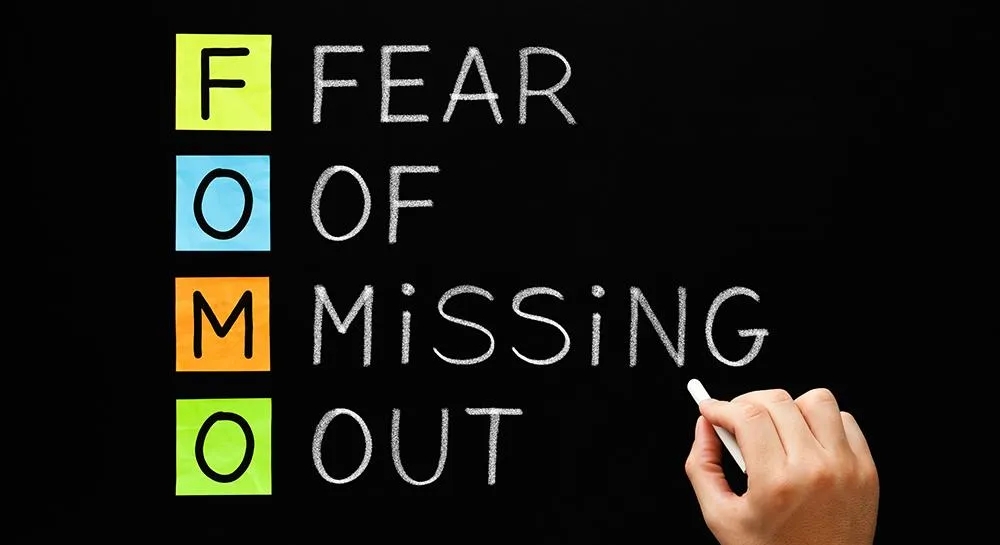
Harnessing the Power of FOMO: How to Trigger the Fear of Missing Out With Your Social Media Content
The fear of missing out - commonly known by its acronym FOMO - is a powerful psychological motivator for human behavior.
At its core, FOMO represents the innate drive people feel to stay continually connected lest they be left out of something desirable that their peers are experiencing.
In today's digital age of nonstop updates and streams, evoking FOMO is easier than ever on social media. Savvy brands are learning how to ethically tap into FOMO psychology to drive engagement, conversion and loyalty.
In this comprehensive post, I'll break down the science of FOMO and detail proven strategies to trigger and leverage this innate social anxiety across all major platforms.
Let's explore how to ethically harness FOMO without manipulating your audience. Used right, FOMO is the ultimate engagement booster.
Understanding the Psychology of FOMO
The term FOMO originated in 1996 from Harvard MBA student Patrick McGinnis, who penned an op-ed about the social pressures and anxiety experienced by his peers.
But the advent of social media has taken FOMO into overdrive. Psychologists note these key drivers:
Primal human desires for connection and belonging - exclusion raises alarms
Positive assumption that others have more rewarding experiences
Social comparison - carefully curated content stokes insecure comparisons
Participation ambiguity - unsure what connections you're excluded from
This combustible mix makes FOMO a dominant consumer force today. People crave the content they feel might fill their need for social inclusion.
FOMO Strategies for Facebook
Facebook's endless content feeds make FOMO ripe for activation. Some proven tactics include:
Teaser Posts - Vaguebook posts hinting at exciting news spark curiosity by leaving followers in the dark. The mystery grabs attention.
Link in Bio - Saying "link in bio for details!" drives clicks by forcing visits to see the full story. Avoiding missing it triggers waves of traffic.
Backstage Access - Behind-the-scenes footage, like product development glimpses, taps into FOMO by making audiences feel special for insider access others lack.
Appointment Posts - "Join my next webinar this Friday at 9am!" - highlights can't miss events. The limited access element evokes FOMO.
Reviews and Photos - User-generated content like rave reviews and product photos make non-customers feel left out of positive experiences peers are having.
FOMO Strategies for Instagram
Instagram is ripe for visually evoking FOMO given its aspirational content. Tactics include:
Location Tagging - Tagging exotic, sought-after locations that followers would crave to visit taps into travel FOMO.
Experiential Events - Highlighting exclusive pop-up experiences, opening parties or invite-only events fuels a sense of missing out.
Shoppable Product Features - Pinning shoppable products to your media fuels retail FOMO by spotlighting coveted goods followers can instantly buy.
Countdown Stories - Posting expiring 24 hour story content builds fear of missing time-sensitive updates. Urgency to stay looped in rises.
Limited Edition Launches - Promoting limited product releases or availability explicitly triggers FOMO by playing to scarcity. Exclusivity allures.
FOMO Strategies for Twitter
Twitter's real-time public nature makes timing essential to spark FOMO. Consider:
Newsjacking Trends - Jumping into timely conversations about breaking news makes followers anxious to miss key tweets or context.
Live Tweeting - Tweeting events as they unfold in real-time attracts masses wanting to feel involved. No one wants to be left out of what's happening now.
Rapid-fire Deals - Offering flash deal or discount promotions framed explicitly as ending very soon taps into sales FOMO. But don't overdo it.
Polls Closing - Notifying followers of expiring Twitter polls creates urgency to cast votes and participate before missing the chance.
Contests and Giveaways - Promoting sweepstakes eligibility closing soon evokes giveaway FOMO. Limited-time elements pressure entries.
FOMO Strategies for Pinterest
Pinterest's aspirational nature lends itself to visually triggering FOMO. Consider:
Promoted Product Pins - Paying to spotlight coveted products pings shoppers with retail FOMO. Temptation is high to click and buy.
Complete Looks - Stylish head-to-toe outfit pins spark fashion FOMO by spotlighting desirable styles people crave for themselves.
Dream Vacation Boards - Travel boards at exotic locales tap into wanderlust FOMO. Pinning looks into unattainable experiences others are having.
DIY & Recipe Boards - "Had to try this!" commentary on trending DIY pins fuels crafty FOMO. Spotlighting desirable skills in action intrigues.
Group Boards - Collaborative group boards like wedding ideas highlight experiences people yearn to have. Shared yet unattained goals kindle FOMO.
The Takeaway
Wielded carefully and ethically, FOMO can become a formidable tool in your social media marketing stack - but never seek to intentionally manipulate.
Rather than deceiving audiences, craft content that genuinely rewards their attention by fulfilling needs for insight, access, connection and value.
The ultimate goal remains building loyal communities who engage with your brand because it adds value - not solely due to anxiety.
But understand the psychology of FOMO and leverage it appropriately to highlight the value on offer that your audience doesn't want to miss.
What other ethical examples of harnessing FOMO have you seen resonate? What lessons have you learned activating this critical psychological motivator? Please share your insights!

